Looking for your next adventure? It starts here!
Join our women's adventure community for exclusive trips, partner benefits and inspirational articles delivered straight to your inbox.
For women who want to collect experiences, not things.
Book a TripOur Larger Trips
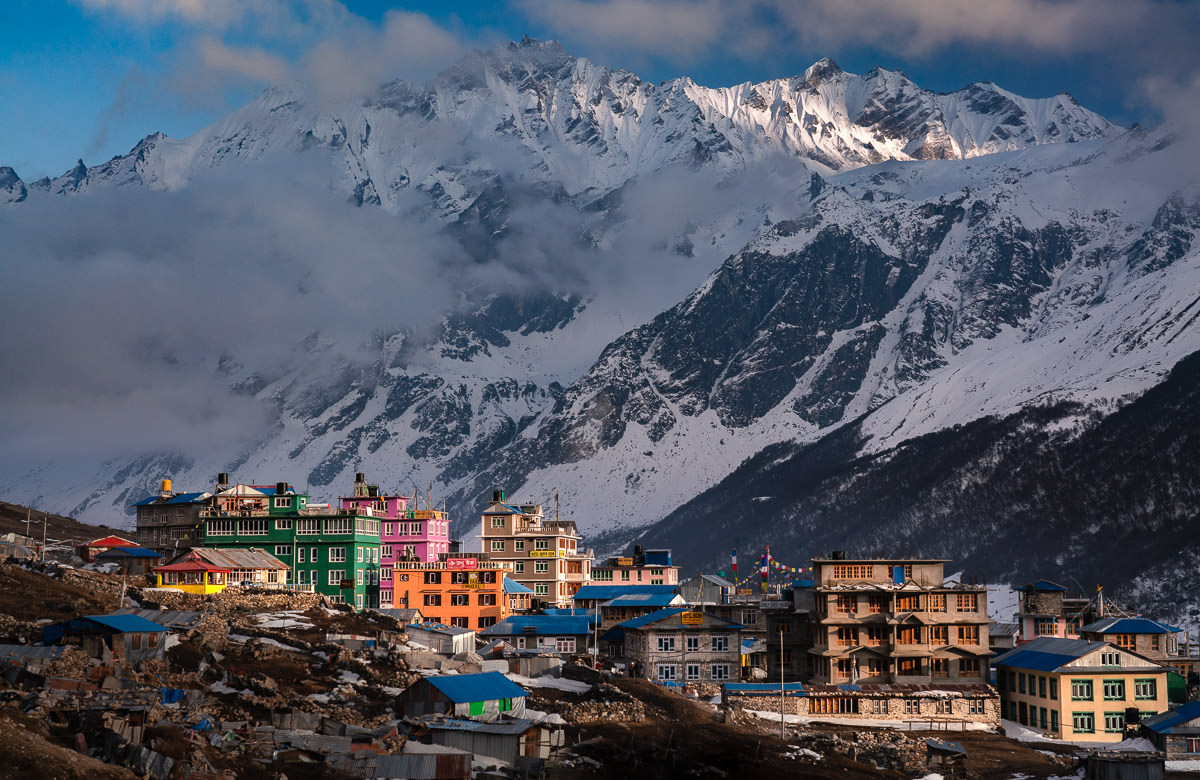
Bordering Tibet, the high and isolated Langtang Valley lies between the main Himalayan range of the north and a slightly lower range of snowy peaks to the south. Due to its close proximity to Tibet, Langtang Valley is one of the best treks to meet the welcoming Tamang people, whose religious practices, language and dress are more similar to those of Tibetans than to the traditions of their cousins in the middle mountains.
Only a half-day drive, Langtang is the closest trekking destination from Kathmandu. The trek is surprisingly quieter than regions of Everest and elsewhere on the Annapurna massif, providing a less-travelled, more intimate trekking experience with an abundance of wildlife, majestic waterfalls, and 360-degree views of the Himalayan mountain range from Annapurna in the West to Makalu in the East.
The captivating Langtang Valley trek follows the river upstream through forest of pine, bamboo, rhododendron and pastures to arrive at the alpine meadows of Kyanjin Gompa, where exceptional views of soaring, snow-capped peaks and glaciers await the adventurous.
During your trek, you’ll enjoy views of the highest summits in the area, including Langtang Lirung (7,246m) along with Gang Chhenpo (6,388m) and Naya Kanga (5,846m) and the breathtaking Dorje Lhakpa (6,966m).
AT A GLANCE
A compulsory pre-trekking briefing is held on Day 2 of your trip at Kathmandu Guest House. Please see itinerary for further details.
Your trekking adventure begins by walking up the Langtang Valley to Langtang Village (3,500m) inside Langtang National Park, allowing a gentle acclimation to the altitude as well as a chance to see the beautiful forests of flowering rhododendron trees (the natural flower of Nepal) and inviting hot springs the region is famed for up close.
As you trek, you’ll pass under fluttering prayer flags hung across the rugged paths, crossing rustic suspension bridges. Highlights include traversing the famous Bhote Koshi river, visiting Buddhist monasteries, yak pastures, and a visit to the famous cheese factory. As evening falls, you’ll be welcomed into the village’s traditional tea houses, where delicious, meals prepared by locals with ingredients fresh from their gardens will sate your hunger.
Continuing on, the trek slowly climbs to the upper regions of the valley. Inhabited by yaks and surrounded by ascending peaks, it’s an indescribable haven where you’ll have ample time to explore and further acclimate whilst enjoying the fabulous views all the way across to the high peaks of Tibet.
One of the major highlights of the trek is climbing to the highest viewpoint, Tserko Ri (5,150m), which offers a breathtaking view of sunrise on the Langtang Range. We’ll also explore Langtang glacier the beautiful yak pastureland of Langshisha Kharka.
The trails are shared by locals, mules and a variety of animals. As we follow the trekking trail, you’ll pass women and men carrying wood, as well as locals weaving bamboo and cultivating their fields. Along the rivers and streams can be found a vast range of flora and fauna native to the region: oak, fir, pine, maple, hemlock, black bear, rhesus, monkeys, Himalayan tahr, red pandas, pika, musk deer, lophophorus and diverse other species of birds and animals can all be spotted along the trail.
It's a nature lover’s paradise, high above the concerns of the everyday world – yours to explore in the hands of your experienced guides.
* All prices are per person and listed in Australian Dollars (AUD). All prices shown are GST inclusive where applicable.
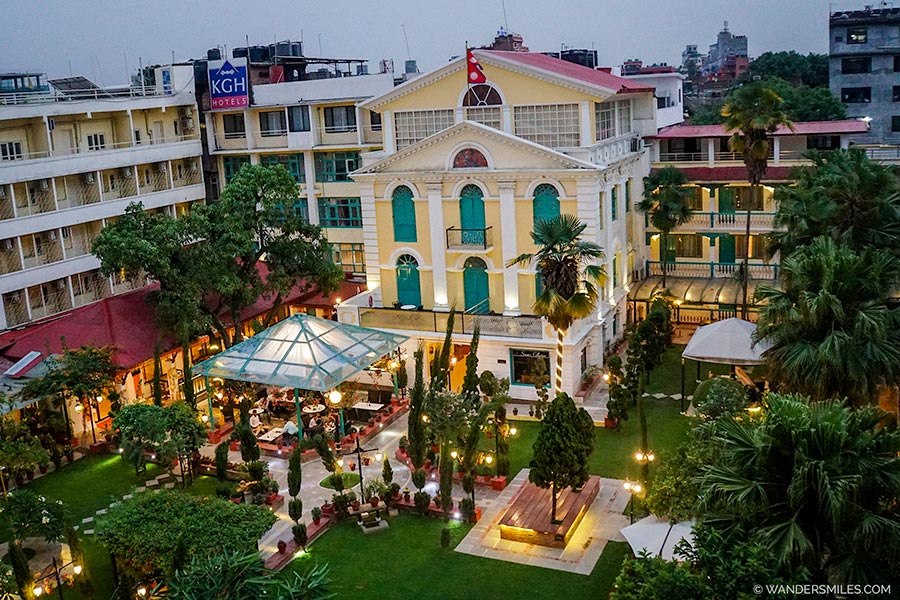
Upon arrival at Tribhuvan International Airport, one of our team will greet you and transfer you to The Kathmandu Guest House in Thamel by private vehicle. As you peer out the window, the bright sunshine will reveal the soaring range of Himalayan peaks to the north. At the hotel, you’ll enjoy an easy check-in process, and can let any tiredness from your flight melt away in the comfort of your private room.
Note: Airport pick-ups can be arranged within 3 days prior to the trip departure date. Clients must inform Women Want Adventure at least 4 weeks prior to departure with their flight arrival number and time. Please make your own way to the hotel outside this timeframe.
Included: Airport pick-up and 1-night’s accommodation in Kathmandu at Kathmandu Guest House (private room).

Kathmandu is a wonderful mix of the ancient alongside the modern. Crowded, busy streets, cars, motorbikes, and buses thread their way between ancient temples, crumbling shrines and modern offices, as picturesque palaces slowly sag into dereliction and Buddhist stupas gaze over the bustling scene with their all-seeing eyes. Although a crowded, noisy, and polluted city, it is also friendly, fascinating and vibrant.
Today is free time for you to explore and enjoy sight-seeing in your own time. Join up with other women on the trip, or enjoy experiencing these sites individually.
If you’re looking to get the most from your time here, we recommend the following:
Pashupatinath – The largest Hindu Temple of Nepal, dedicated to the supreme Hindu God, Shiva, situated on the banks of the Bagmati River. At Pashupatinath, you’ll see exceptionally carved statues and idols of Hindu deities, as well as a long row of Shiva-Lingas. This complex of small temples – and the golden hood at the top of the main Temple – are truly fascinating. Moreover, you’ll get the opportunity to witness a Hindu death ritual at Pashupati Aryaghat – a unique cultural experience that will linger long in your memory.
Boudhanath – A site that holds huge religious significance among the Tibetan Buddhists of Nepal. A major shrine on the ancient Indo-China trade route, traders and scholars would visit Boudhanath seeking blessings for a safe journey through the high Himalayan passes to Tibet. Even today, saffron-robed monks practice daily circumambulations of Boudhanath, as colourful prayer flags touch the skyline from the dome pinnacle to the base of the large monument. The centre of Tibetan culture in Nepal, Boudhanath is a truly special place.
Durbar Square – Located before the old royal palace of the former Kathmandu Kingdom, the exemplary wooden and stone craftsmanship of this site makes it a prominent attraction. Stone-paved streets and pagoda-style religious monuments displaying different Hindu deities reveal the cultural delights and exquisite craftsmanship of ancient and medieval Nepal at Kathmandu Durbar Square.
Swayambhunath – High atop a hill in the Kathmandu Valley, the ancient religious complex of Swayambhunath is home to a stupa and various temples honouring the ‘Self-Created’ nature of the valley, over which the painted eyes of the Buddha maintain an eternal watch. As one of the oldest religious sites in Nepal and the second-most sacred site in Tibetan Buddhism after Boudhanath, you’ll get to experience an authentic taste of one of the world’s greatest, most beautiful faiths here at Swayambhunath.
In the evening, we’ll meet as a group at Kathmandu Guest House fat 4pm or our pre-trek briefing with the Guiding Team. The briefing will be approximately 45 minutes in duration.
Included: Hotel in Kathmandu (private room) with breakfast, complimentary beverage at briefing
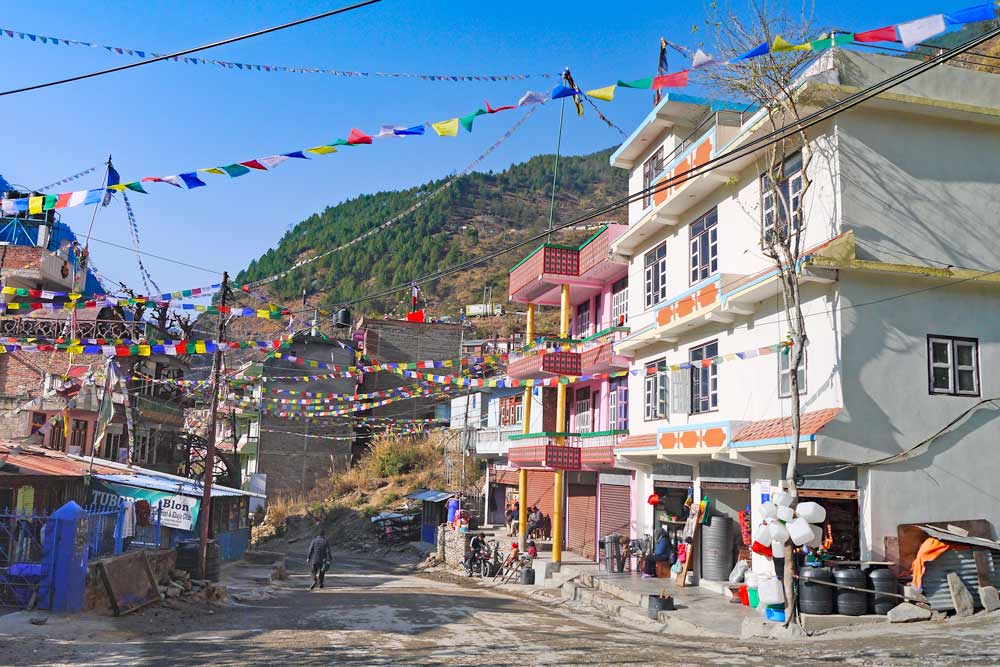
After an early breakfast we’ll drive north in private vehicles from Kathmandu to Syabrubesi, a small village on the banks of the Bhote Kosh river that forms the trek’s starting point to Langtang Valley – about 7-8 hours’ drive (pending road conditions). Enjoy the scenic drive through Trishuli Valley with rural villages, rivers, and mountains along the way. Parts of the road are unsealed and the condition of the road and time travelling often depends upon the monsoon season. While the group will stop at one of the restaurants on the way for lunch, it's a good idea to pack snacks with you for the drive along with charging your headphones/Kindle. We will reach Syabrubesi (1,420m) around 2 or 3 o'clock, after which we’ll take time to explore and settle into our tea house accommodation for the night.
Included: Mountain tea house accommodation (twin share), all meals

From Syabrubesi we’ll begin our trek to Lama Hotel. The trail crosses the Bhote Khola via suspension bridge, before continuing east, chasing the trail upstream along Langtang Khola. The trail starts as a moderate climb and zigzags up the broad valley. On your ascent, you’ll see the village of Thulo Syabru clinging to the high valley side. Shortly after this, you’ll join the trail leading to and from Thulo Syabru, before entering a deep gorge which marks the start of the Langtang Valley.
From here, you’ll begin a steady, 2-hour descent through a bamboo forest to the valley floor where the small village of Bamboo (1,850m) awaits. On the trail, we’ll have many opportunities to view well-established villages, as the trek climbs gently up to Rimche (2,400m) on the banks of Langtang Khola. Finally, we ascend through the dense bamboo forest to arrive at Lama Hotel (2,500m). If we’re lucky, today we may spot wild species such as red panda, monkeys, and bears, so have your cameras ready!
Included: Mountain teahouse accommodation at Lama Hotel (twin share), all meals
Today is important for acclimatisation. Leaving the tea house after breakfast at Lama Hotel, we’ll continue our climb up the Langtang Valley, a pleasant 3-hour walk following the trail through rhododendron and pine forest to reach Ghoda Tabela. After arriving the Lama Hotel, we’ll continue for another 3 hours walking the scenic trail that will take us to Langtang Village (3,500m), where we can relax for the evening and enjoy the hospitality of the locals.
Included: Mountain teahouse accommodation (Langtang Village), all meals
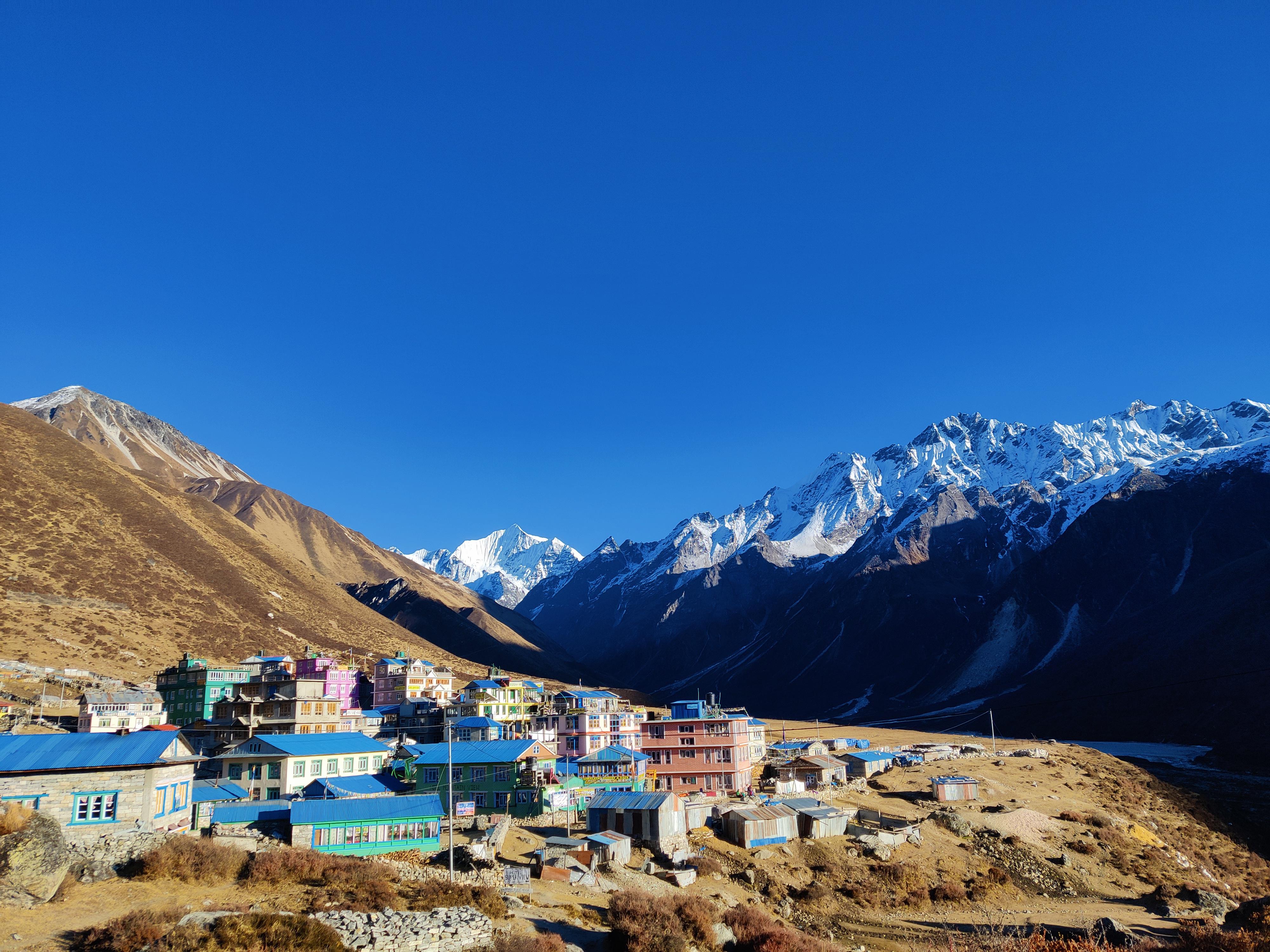
After breakfast, we’re back on the trail, climbing gradually through small villages and yak pastures as the valley opens out further and the views become more extensive. After crossing several small streams and moraines, the trail reaches the settlement at Kyangjin Gompa – the last destination of our trekking, at an altitude of 3,817m above sea level.
From here you’ll take in sublime views of Mt Ganchempo and Mt Langtang Lirung, before visiting the small monastery and government-operated cheese factory. We’ll arrive at Kyangjin by lunch time, allowing time to acclimatise and explore the area. It is a dramatic setting, with snow-covered peaks surrounding us in all directions. At this point, we’ll also enjoy the panoramic view of Dorje Lhakpa (6,990m), Langtang Ri (6,370m) and Langtang Lirung (7,245m).
Included: Mountain tea house accommodation (twin share), all meals

Today is rest day, or if you wish, a chance to take a side trip to hike the peaks with a whole day to explore around the natural beauties of Kyanjin Gompa. In the morning, you can climb either Kyanjing Ri (4,600m, 2-3hrs) or Tsergo Ri (4,984m, 6-7 hours) – or both, depending on weather and how you’re feeling. You may like to split your time between trekking with a visit to the monastery and famous cheese factory.
Included: Mountain tea house accommodation (twin share), all meals
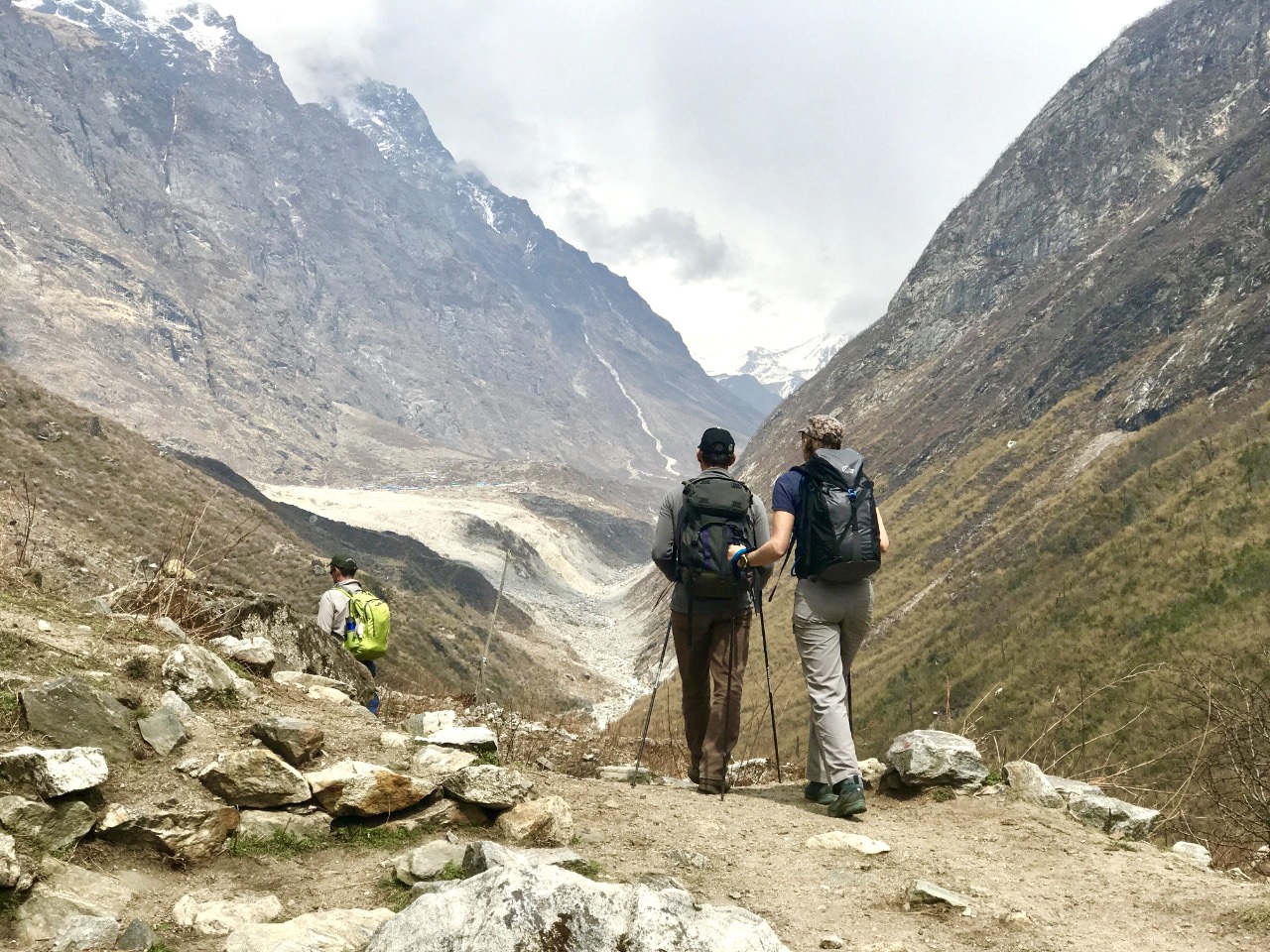
After breakfast, we retrace our route back to Ghoda Tabela. Walking will be pleasant and scenic at a leisurely pace, taking between 4-6 hours to reach our destination, depending on stops and rests along the way. After lunch, we’ll continue the steep descent to Lama Hotel.
Included: Mountain tea house accommodation (twin share), all meals
Today we walk down to Syabrubesi via Bamboo through the previous rhododendron forest and along the Bhote Koshi river. Come evening, we’ll enjoy the opportunity to explore around the beautiful village of Syabrubesi, nestled amongst the enveloping green hills of Lantang National Park.
Included: Mountain teahouse accommodation (twin share), all meals
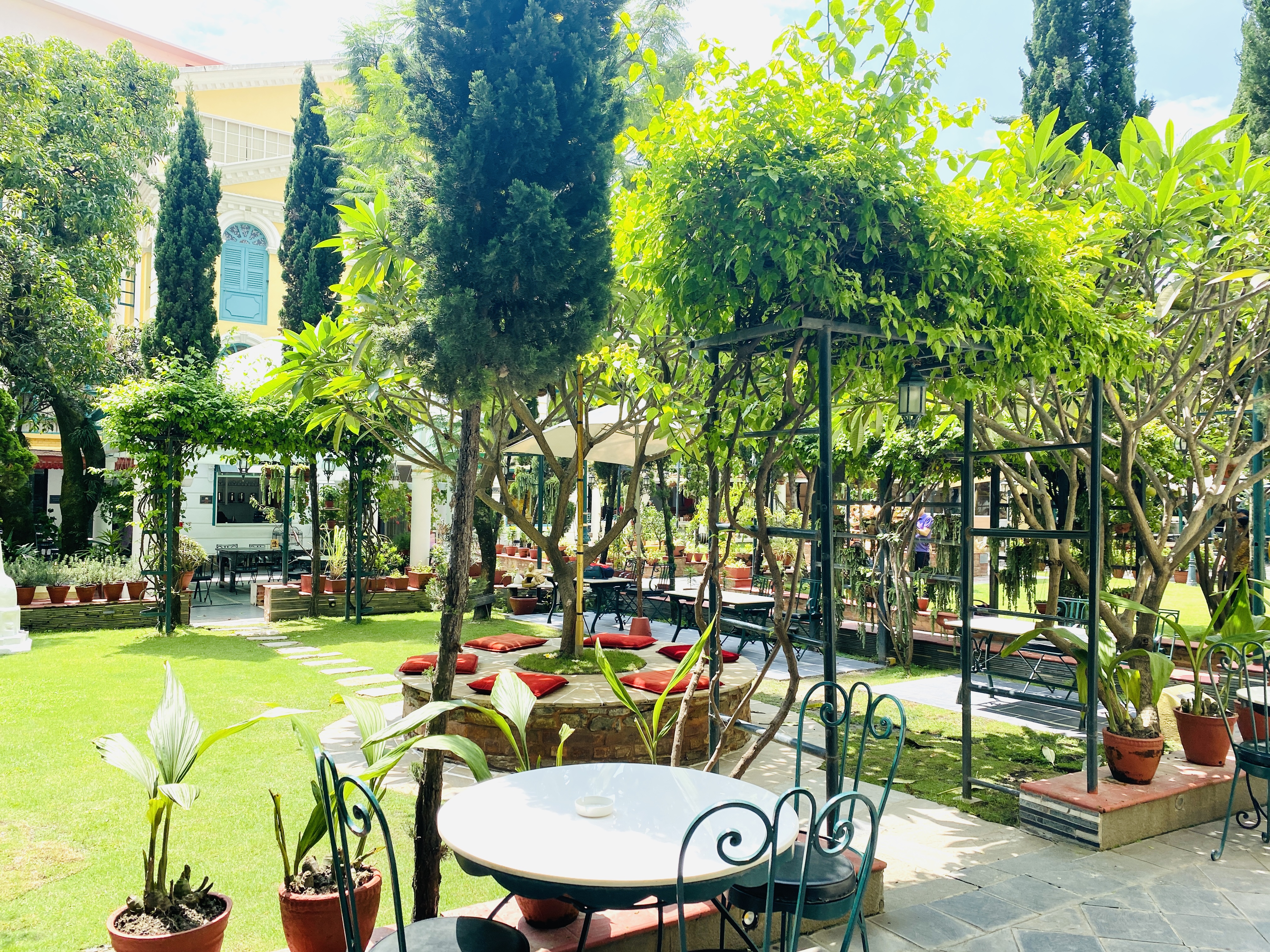
After breakfast, we drive back to Kathmandu for a well-earned hot shower and beverage. Rest and recharge in the evening, or stroll around the commercial neighbourhood of Thamel for some shopping before we gather to enjoy a farewell dinner together at one of Kathmandu's most highly regarded restaurants.
Included: Hotel in Kathmandu (private room) with breakfast and farewell dinner with drinks
This is your last day in Nepal, if you choose. While our scheduled trekking has come to an end, you may decide to increase your stay in Nepal, venture on another trek, or rest in Kathmandu for a few more days. Whatever you choose to do, you’ll be left with a sense of accomplishment and community, and a lifetime of memories from your time visiting the roof of the world with likeminded, adventurous souls.
Included: Hotel breakfast. Airport transfers can be arranged privately at the hotel. If you have the time, we recommend a trip to Pokhara
Every Nepal trip is given a different grading depending on the terrain, length of trip and altitude. The Langtang Valley Trek is graded Moderate to Challenging. It’s important you read the grading description of your trip prior to booking to understand if it’s right for you. You will need an excellent level of fitness and in good health to be prepared for your trek.
Difficulty is a relative term, and adventure is a state of mind. For some women, one of our moderate trips may be simple, while for other it may be a terrifying, life-changing experience. Some of our trips will vary between moderate to challenging.
To help guide you to the most appropriate trip for your fitness, please see below:
Of course! Almost all women attend our trips individually. This trip is a great way to experience Nepal with like-minded women, as the small group sizes and the style of trip bring people together, encouraging new friendships.
Our Nepal treks will appeal to those wanting to push themselves a little further, you will need to be undertaking a regular exercise program 4-5 times per week and have a good level of fitness and health prior to attending. The trek is graded moderate-to-challenging for healthy clients in good physical condition. You can expect to spend up to 5-8 hours trekking each day at a slow pace, on rocky marked and unmarked trails, with some steep inclines and declines. Treks involve carrying a daypack only.
We can’t underestimate how important it is to have a good-to-high level of fitness for the Nepal trek. You’ll be moving for up to 8 hours a day, at altitudes over 4000 metres. Training and preparation are an absolute must.
Fitness and Preparation – A regular fitness program that involves at least 3 to 4 sessions per week of aerobic activity, along with hill walking with a daypack and trekking on uneven surfaces. Walking similar distances to days on your itinerary leading up to your trip will help achieve fitness goals for trips of this nature.
Eating is a big part of travelling. When travelling with Women Want Adventure, you’ll experience the vast array of wonderful food available in the mountain tea houses. Expect a lot of tea – the name ‘tea house’ isn’t misleading! Often the first thing you’ll be greeted with at a tea house is a warm cup of black tea with sugar or ginger tea, great for altitude sickness. If you’re hiking in the rain, snow, or wind it’s the perfect way to relax.
Meals are often cooked over a fire in the small kitchen by the owners. While much of the food is delicious, especially the Nepali staples like momos and dal bhat, the quality of the Western-style dishes will vary greatly. Kitchens are not like a Western-style restaurant, with chefs catering for a range of dietary requirements – what is on the menu is the menu. Please note, our treks do not cater for specific dietary needs, and it’s best to contact us to talk through any requirements prior to booking. Vegetarians and vegans are well catered for in Nepal.
Here’s a typical list of what you can expect to order in a tea house:
Breakfast
Lunch and dinner
Dessert (extra charge at own cost)
(rice pudding, chocolate pudding, apple or banana fritters)
Snacks (extra charge at own cost)
Help yourself to the generous portions of dal bhat, Nepal’s local dish that literally means “lentils and rice.” Mostly vegetarian, but sometimes served with meat on request, this dish is a daily staple across Nepal, India, and Bangladesh: a heavy lentil-based soup eaten with rice, curry, veggies and spices that locals will eat at least once a day. Seriously.
We highly advise you to stay away from the meat dishes as they might not be fresh and therefore not safe for consumption. According to the religious faiths of the Sherpa people, they are not allowed to slaughter in the mountains, so all the meat items are carried up to the tea houses on foot, often over many days! If the tea house is understaffed, or there is an abundance of trekkers, guides and porters will often hop in the kitchen to lend a hand. You are not expected to help, and are kindly advised not to.
Crisp glacial streams in the mountains aside, it won’t take you long to realise that the overall water quality in Nepal (particularly in Kathmandu) isn’t the greatest. Using it to shower is totally fine (keep your mouth closed), but be warned that the water from the tap can be a funny colour and often smells… different. Tap water and river water in Nepal is unsafe to drink. You will have a choice between bottled water, purification tablets (please ensure you pack some), or boiling water. When brushing your teeth, do not use tap water.
There’s nothing worse than trying to adventure when you have Nepal-belly (trust us, we’ve been there), so be safe and take extra precautions. Most trekking paths will have clean water tanks, but we recommend still investing in a water purification and filtration bottle — we use The Grayl GEOPRESS, which is hands-down the best travel-related investment we’ve ever made, and means we can drink the tap water anywhere we go – including India! Alternatively, bring along some water purification tablets or a SteriPen to drop into your bottle on the hiking trails just to be safe.
Drinking sufficient amounts of water in Nepal is essential to avoid the risk of dehydration, so if you follow the steps carefully, you should be safe for your trip. Please note, buying bottled water from villages is not included in your trip price. Please bring additional cash with you.
Tip: We recommend bringing electrolytes with you to keep hydrated throughout the days trekking.
We recommend checking out the country specific information by checking out this website here. Please also read information for guidlines travelling to Nepal related to Covid 19 be clicking here. We also suggest you consult with your nurse/travel doctor.
Altitude sickness can affect anyone, regardless of age, trekking experience or level of fitness. It’s one of the top concerns people share about trekking Nepal and it’s a valid one. Unless you live at a very high altitude, our bodies are not acclimatised to the lack of oxygen in the high mountain air. Ascending too fast can cause problems. If symptoms of altitude sickness in Nepal (or anywhere else) are not addressed quickly, they can be extremely dangerous.
All our itineraries allow enough time for you to safely acclimatise. However, there are also things that you can do to support your own acclimatisation. If you know what symptoms to look out for, you can act quickly with the help of your trekking guide.
Altitude sickness, also called Acute Mountain Sickness (AMS), makes it difficult for oxygen to enter your body (vascular system) due to the low air pressure. The higher the altitude, the harder it is to get the amount of oxygen you need.
Altitude sickness can occur when you ascend to a high altitude too quickly. It’s more likely to affect people above 2,500m/8,200ft. Most of our treks climb to at least 4,000m/13,000ft, so there’s an element of risk.
Please download the Nepal Essentials Information PDF on this booking page for more information.
Sorry! Women Want Adventure does not arrange flights to or from Kathmandu. We do arrange any internal flights depending on the trip you have booked. Please see your itinerary for further details.
Comprehensive Travel Insurance is a mandatory requirement for attendance on all our Nepal trips. The cost of medical, helicopter evacuation and/or hospital care can be very expensive. Your insurance policy should cover cancellation and curtailment, baggage loss or damage, emergency travel, repatriation, personal accident and evacuation from a remote area. It is your responsibility to ensure that you are fully insured before leaving home. Please send us your travel insurance number prior to departure.
Women Want Adventure is not liable for any cost or loss, directly or indirectly, from any personal disruption due to illness and COVID-19. Such costs or losses include but are not limited to: requirements to follow COVID-19 mandates, flights, accommodation, transfers, and other expenses incurred over and above the trip price. Once your trip has commenced there is no refund available for any portion due under any circumstances.
Please ensure that your travel insurance covers you for treks at high altitudes in Nepal, such as over 3000m. It's important to note that some insurance companies may not provide coverage for hikes over 3000m, so it's crucial to check the policy details carefully before purchasing.
You must provide evidence to Women Want Adventure that you have obtained the required personal travel insurance covering all of the activities you expect to participate in 70 days prior to trip departure.
There is a weight restriction on the items you provide to the porter you will not need to carry yourself. A porter in Nepal will help you throughout your trek by carrying additional items in a large duffle bag, provided to you at the briefing. This does not mean you should pack whatever you can get our hands on! The duffle bag is the one in which the most essential things for the trek are stored i.e., additional clothing for evenings, spare shoes, hygiene products, a book etc. Porters will carry up to 20-25kg, approx 10kg per trekker.
Out of respect for the work of the porter, it is important to prepare properly for trekking and reduce the number of things we take with us. It is best to pack as if we had to carry it ourselves – this way it’ll be easier for us to decide what we have to take and what will be unnecessary. Trust us, the less you have that is not essential, the better.
For current advice, visit the Smart Traveller website here.
Tribhuvan International Airport is the only international airport of Nepal. On arrival, the visa procedure is generally very quick and simple. You can expect some queues during peak tourist season, but if you wish to skip those queues, you can also consider getting a visa from the Nepalese Diplomatic Embassy in Australia prior to your arrival.
Please ensure that your passport is valid for 6 months after your return date from Nepal or you may be refused boarding your international flight to Nepal and restricted from gaining an entry visa. It is also important to bring 2-3 passport-size photographs with a light background which are often used for permits, SIM cards, flights etc. Visas can be obtained only through payment of cash in the following currencies: Euro, Swiss Franc, Pound Sterling, US dollar, Australian dollar, Canadian dollar, Chinese RMB, Hong-kong dollar, Singapore dollar and Japanese Yen.
You must pay in cash, and costs are AUD 40 for 15 days, AUD 60 for 30 days, and AUD 150 for 3 months. Credit cards, Indian currency or Nepalese currency are not accepted for visa fee payments.
To ensure a smooth arrival, please withdraw cash prior to arrival at the airport. If you wish to extend your stay, you can extend your visa at the Department of Immigration in Kathmandu and Pokhara offices for total of 120 days. Before arrival, you must complete the online application form by visiting online.nepalimmigration.gov.np/tourist-visa
We work with some of the best local Nepalese guides in the industry we personally met when preparing this trip. We learned about their villages, families, where their kids go to school and the positive impacts guiding has for their village.
Every single one of them is government licensed and very experienced. Our treks are led by English-speaking local guides, as exploring in the company of a local is one of the best ways to really discover the culture, heritage and everyday life of a new destination.
You will also be led by a Women Want Adventure guide who is qualified in all aspects of outdoor leadership, and who is there to enhance your Nepal experience by sharing their tips, knowledge and passion for adventure. In destinations with limited tourist infrastructure and villages in remotes regions, both your guides will be there to assist you.
Collectively, our local and team guides represent an enormous fund of knowledge and experience.
The average age of women attending our trips is 45 years. Ages can range from early 30's to mid 60s. All Women Want Adventure trips are for women over 18 years of age only.
It is customary in Nepal to tip guides and porters. Although it may not be customary to you, it is of considerable significance to the people who will take care of you during your travels. Knowing how to appropriately tip in any country can be tricky, and tipping in Nepal is no exception. There’s no hard and fast rule, so using your discretion is key. For a local guide, if you are trekking solo, $5 a day is appropriate. If you’re in a group, $10 a day is expected. Of course, if you are happy with the service, tipping more is always great and can be discussed amongst the group.
When tipping porters, they usually receive a minimum of $5 a day for treks. Remember, while a guide has more skills and has worked their way up, a porter has to carry a gruelling amount of weight on their back every day. Treat them with the utmost respect, as they are the most wonderful humans with the biggest smiles.
Tipping is usually finalised at the end of the trek and is not part of the tour price. Tipping is arranged by clients and those who wish to participate. It is not compulsory to tip, yet it is the cultural norm. We recommend you bring cash with you on the trek, not only for village purchases (souvenirs or cold drinks) but to pool together tipping cash for guides and porters, post trek.
Winter days in Nepal are generally dry and bright, though at altitude the evenings will be extremely cold, and some high passes can be blocked by snow. Although a high-altitude trek may not be possible, winter can be a great time to visit Nepal, as there are fewer tourists. There are some fantastic walking and trekking holidays which are perfect for an adventurous winter holiday. You could spend Christmas day gazing at a perfect snowy mountain scene!
Spring is a popular time to go trekking in Nepal, as temperatures climb steadily, and the weather tends to be more stable. Trails are more crowded, however, and the skies can be a bit hazy at times. Spring features great festivals, including Holi in March and Nepalese New Year in April. The beautiful rhododendron and magnolia will be in bloom during this time.
Summer in Nepal is monsoon season, bringing hot, humid weather. As a result, most trekking areas tend to experience cloudy skies and rain, and trekkers seeking to experience certain regions of the Himalayas at this time of year, such as Upper Mustang or Nar Phu, are advised to trek in the “rain shadow” of the ranges. Internal flight schedules can be affected, and the mountain views are limited, even if the trails themselves are fine for trekking. The Yarthung Horse Festival takes place in June in Manang, as riders from the entire district and neighbouring Mustang gather to show off their skills.
Autumn is the most popular season for trekking, as the weather is usually stable, with moderate temperatures and clear skies. It does mean however that the crowds are at their largest as well, so bear that in mind. Big festivals like Dashain (October) and Tihar (November) also take place over the autumn period.
Nepal is also a good country for vegans and vegetarians in general. Kathmandu is filled with trendy cafes and restaurants will all sorts of creative takes on international favourites and Nepal food. Tea houses throughout the trek can also cater for vegan/vegetarian as most dishes are vegetarian/vegan based, or you can make them so.
If you are gluten intolerant or celiac, you must inform us upon booking. There is no guarantee on tea house or camping style treks of complete elimination of gluten in regards to cross contamination in tea house kitchen or camping kitchens.
As we are also unable to guarantee a nut-free or allergen-free trip, we strongly encourage clients with severe or life-threating allergies to take all necessary medical precautions and speak with your doctor. Clients trekking with us with allergies must inform us prior to departure on a medical form and carry all necessary medications for allergies, including be capable of self-administration.
Your trip covers most costs for meals, permits and accommodation. However, we recommend you bring cash with you for additional luxury items not covered in your trip cost. How much cash you bring with you on your trek will depend on your spending, however we recommend you have enough for buying cold drinks, sweets or souvenirs (not included in your trip), or alcohol at the tea houses. You may also wish to buy additional meals or food – we recommend that between 10,000-15,000 Rupee would be suitable.
Of course. Please carefully read our detailed terms and conditions policy here. Do not hesitate to contact us with any questions.
Tea houses will either have Western-style (sit down) toilets or the more traditional squat toilets found across Nepal. You never know which one you’re going to get, but the higher up you trek, it’s more likely to be the latter. Make sure to bring enough toilet paper for your entire trek and always have hand sanitiser nearby. Small tissue packets are also highly recommended. We advise bringing zip-lock bags for any sanitary items, that you can place in the zip-lock and dispose of in a bin. As most villages do not have a sewage system, you will not be able to place your tissues and toilet paper down the toilet. A small bin is provided for loo paper next to the toilet.
As for showers, they’re generally only available at the lower elevation tea houses and hot water is not always a guarantee. Wet wipes are your friend! Showers are usually taken with a bucket where you stand in a tub and pour water over yourself.
Tip: A small face-mist is a great way to feel refreshed at the end of the day. We recommend bringing some with you.
Please download the Essentials Information PDF on this booking page for all information. If you still have a question, please dont hesitate to contact our team here.
Nepal: The Ultimate Adventure Destination - As Told by Women Want Adventure
“Hello, it's Monique from Women Want Adventure here and let me tell you, Nepal is the BOMB.com! I spent 7 whole weeks in Nepal last year, trekking amongst the towering mountains, and let me tell you, it was a total BLAST! Nepal is like a wild and crazy rollercoaster ride, full of surprises and beauty around every corner. The people are so warm and friendly, it's like one big hug fest. And don't even get me started on the momo’s, they are delicious! So if you're looking for an adventure that will knock your socks off and leave you wanting more, Nepal is the place to be. Trust me, I know from experience. So pack your bags and get ready for an adventure of EPIC proportions! I’ll be over their guiding with the team so hope to see you there!”
© Copyright 2024 Women Want Adventure. All rights reserved.
Made with by SiteSuite in Sydney